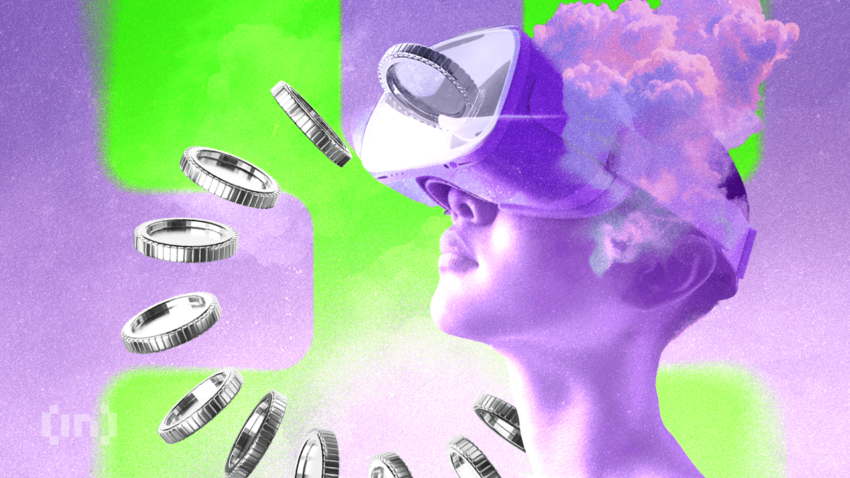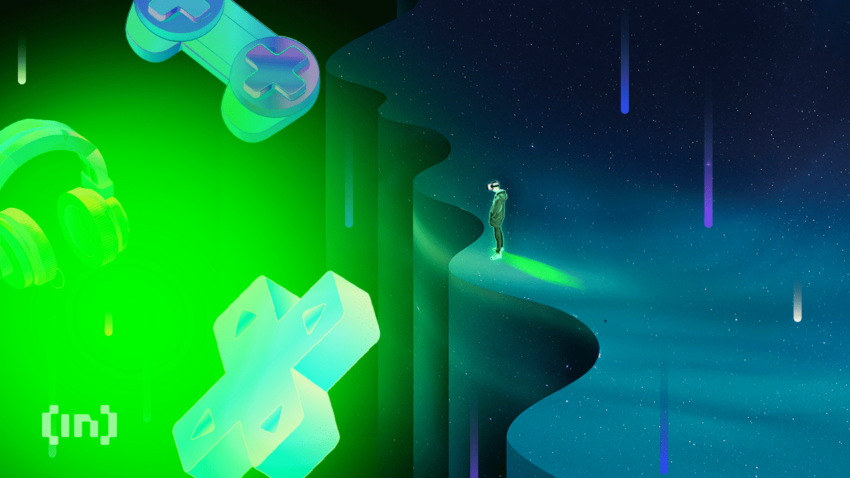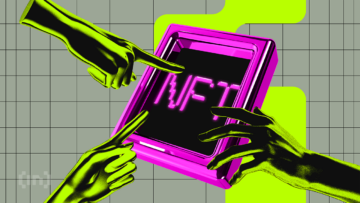GameFi combines the old-fashioned joy of winning prizes with the latest crypto innovations in DeFi. Players can trade, lend, or even borrow against their earnings. This guide takes a closer look at the GameFi concept and the projects working in this area to see how they earn new revenue.
KEY TAKEAWAYS
► GameFi combines blockchain technology, cryptocurrency, and gaming mechanics, allowing players to earn financial rewards through a play-to-earn (P2E) model by owning and trading in-game assets like NFTs.
► Blockchains like BSC and Ethereum continue to dominate GameFi, but rising platforms like TON and Ronin Network are gaining traction.
► GameFi games use NFTs and in-game tokens, which can be traded for real-world value, offering diverse revenue streams through staking, lending, and trading in-game assets.
► While GameFi offers ownership of in-game assets and lower barriers to entry compared to traditional games, users must navigate the complexities of web3 as well.
What is GameFi?

The term “GameFi” is a mashup of the words “game” and “finance.” It mixes blockchain technology, cryptocurrency, non-fungible tokens, and game mechanics to create an environment in which people may participate in games and earn money.
GameFi utilizes a play-to-earn model. This notion entails rewarding players financially for playing and accomplishing certain tasks in games. Landing pages, farming, loans, token issuance mechanisms, and algorithmic stablecoins are a few of the DeFi tools integrated with these types of games.
Blockchain technology is used to launch these types of gaming projects. As a result, players may have ownership of all digital assets they receive and cannot be given away. On a GameFi platform, everything is simple: all you have to do is play to reap the rewards.
The state of blockchain games in 2024
Any crypto project that incorporates both games and financial rewards could be classified as GameFi. Footprint Analytics, which tracks over 80 blockchains, estimates that there are over 4 million daily gamers, and as you can see, BSC (formerly BNB) and Ethereum tend to dominate the GameFi sector as of 2024.

Additionally, the second and third most popular blockchains for GameFi are BSC and Polygon. However, in 2024, the TON blockchain overtook the GameFi narrative as the rising dragon. Due to a unique set of circumstances, including the popularity of Telegram mini-apps, TON became an extremely popular option for launching play-to-earn games and GameFi tokens.
Other winners in 2024 included Ronin Network, Immutable zkEVM, and opBNB. In Q2, Ronin Network gained 1.2 million new daily wallets, the most at the time. Immutable zkEVM and opBNB also made huge strides from an increase in activity by 715,136% and 80,459%, respectively.
While many new GameFi projects are opting to launch on altchains, EVM chains still remain dominant. This may present an opportunity in the future, however, for up-and-coming chains to attract some activity, as users and founders are looking for new chains to migrate to.
How does GameFi work?

In GameFi, NFTs may represent some in-game assets. These NFTs are digital tokens that prove ownership of rare intangible goods. Consider items like land plots, avatars, clothing, and weaponry. After finding and acquiring these items through gameplay, players have the option to trade them in digital marketplaces as NFTs for cryptocurrencies.
For example, players of DeFi Kingdoms (DFK), Harmony’s top play-to-earn (P2E) game, can boost their earnings by leveling up and improving their characters.
Users can build monetized structures on their land that other players pay to use, competing against other players in tournaments. This is similar to the earning potential of Ethereum’s Axie Infinity and Polygon’s Vulcan Forged.
DeFi Kingdoms boasts a well-established player base and a rich in-game landscape. All NFTs and cryptocurrency transactions are recorded on a public blockchain to track each player’s possession, which is indicative of GameFi.
This means that a global network of computers supports distributed digital record-keeping technology. Staking, where players can lock away tokens to receive annual interest and other benefits, is also commonplace in GameFi. In this scenario, players can earn in-game assets or unlock new content.
The play-to-earn model (P2E)

Gamers can earn in-game tokens by winning battles, completing certain tasks, or mining resources as part of the GameFi model. You can exchange real-world value for established digital currencies like Ethereum or stablecoins.
When playing Gods Unchained, for example, players can earn money by creating rare cards and selling them in the marketplace upon completing ranked battles.
As part of the P2E mode of Farmers World, which is Wax blockchain-powered, players can mine the Wax coin. This gives farmers the ability to mine the minerals they need to run their operations and make money from their yields for themselves and their families.
NFT staking is an income model that combines the popular DeFi concept of staking with NFTs. An example of this is Legends of the Ancients LOA tokens, which you can earn through staking NFT. Furthermore, users can earn interest just by holding their NFTs.
Solana supports the Mask NFTs in the card strategy game MixMob. Players can use them as avatars during gameplay, and they evolve dynamically based on their performance, determining how many MXM tokens the players earn.
Some games, such as the BSC-backed defense game Warena, allow players to lease NFTs through the game’s marketplace. DeFi Warriors is yet another NFT game with a marketplace where players can lend their NFTs to other players.
Certain games necessitate a significant initial investment before players can reap significant rewards. To complete daily tasks in TownStar by Gala Games, players must own at least one structure or item NFT. Only after that will they be able to obtain the in-game token TownCoins. To play Axie Infinity, users must first purchase three Axies and then win battles to earn SLP tokens.
Each GameFi game has a unique play-to-earn model, but earning typically involve staking, lending, leasing, mining, or trading.
What are the unique features of GameFi?
GameFi was founded to resolve existing issues in gaming. Among the notable features are:
- Allows users to explore and play various blockchain games distributed across many blockchain networks.
- It is a central repository for in-game items and NFT assets owned by players.
- Gamers can simply monitor the game’s P2E yields.
- Provides instant exposure for gaming developers’ games and in-game products.
- Initial Game Offerings (IGOs) allow investors to have early access to in-game assets and tokens.
- Game developers will gain increased exposure and interact with the GameFi community’s gamers.
What separates web3 games from traditional games are the primitives of cryptocurrency. In general, most GameFi games verifiably record some information on a blockchain, which is verifiable. Gamefi may also allow users to convert in-game currency into cryptocurrency.
This currency is tradeable and may have real-world value. This is opposed to traditional games, which do not have liquidity. Furthermore, you cannot own in-game assets or parts of the game itself, as you can with web3 games.
Perhaps the most prominent aspect of GameFi is the play-to-earn models. While you can earn from games in traditional gaming, this is usually in the form of tournaments. Web3 games fuse aspects of the financial sector directly inside game mechanics, which allows players to benefit from their gameplay.
Advantages and drawbacks of GameFi

From the outside looking in, GameFi may seem like a panacea. Though there are some benefits, there are also some drawbacks. Here is a brief overview of the pros and cons of GameFi.
| Pros | Cons |
|---|---|
| Players can own in-game assets, such as game items and currency | Currently, it is complex to secure player’s in-game assets for exploits |
| Gamefi games are typically cheaper than traditional games | Blockchain-based games tend to have gas fees |
| Many GameFi games offer simple learning curves in terms of gameplay | Users will have to learn how to use crypto wallets and addresses |
Gaming incentives
With the debut of GameFi, the P2E gaming model was a seismic shift for the gaming industry. The new principles rejected typical gaming revenue structures that mainly rely on in-app purchases and advertising. Besides, users are prohibited from utilizing their in-game assets outside the gaming area.
On the other hand, blockchain-based games enable the exchange of in-game tokens and objects for cryptocurrency. As a result, players can take advantage of their in-game assets outside of the gaming environment. However, users should remain cautious of malicious contracts that attempt to steal these assets.
Participation at a low cost
Most games in GameFi are entirely free to download and play. In comparison to traditional games, you can benefit from the accessibility of all forms of P2E games. The low cost is the following significant value advantage linked with projects on a GameFi list.
On the other hand, players may have to deal with blockchain gas fees, which inhibit user’s activities. Developers can mitigate this through a few techniques; however, gas fees are a regular part of blockchain-based games.
A simple learning curve
Many consumers are skeptical of GameFi games because they have reservations about the new P2E approach. However, you do not need to follow complicated processes or instructions to play such games.
On the contrary, straightforward gameplay techniques are one of the most appealing aspects of GameFi projects. As a result, you can see virtually no hurdles to entry into P2E games. Conversely, these types of games may present a hurdle for users who do not know how to use wallets or blockchain addresses.
How to get started with GameFi games

There are thousands of blockchain games, and each one operates on a self-contained ecosystem. The following is a brief introduction to how to get started.
Step 1: Create a cryptocurrency wallet compatible with the game you wish to play. You’ll need to check the game’s official website to determine which wallets they support. While crypto wallets do not hold money in the same manner that regular wallets do, they store the encryption keys for digital assets, enabling you to access, transmit, and receive cryptocurrencies.
Step 2: Integrate your cryptocurrency wallet with the game. Unlike typical online games that require you to create a username and password or provide your email address, blockchain games create an account using your crypto wallet. This will also serve as your login method for the game.
Step 3: Become acquainted with the game’s unique requirements. Numerous P2E games need users to begin by purchasing their in-game cryptocurrency tokens or NFTs.
Bear in mind that, as with anything else on the internet, GameFi is not without its share of scammers, so keep an eye out for phony websites. Therefore, a smart rule of thumb is to create a separate cryptocurrency wallet for each game you play; this way, you’re more likely to lose only coins you can afford to lose.
The future of GameFi and crypto games
The best indicator of GameFi’s future is to examine the evolution of existing projects, such as Axie Infinity. Undoubtedly, the following years will see significant activity in this industry and all linked technologies. As blockchain technology advances, the GameFi growth trend is projected to accelerate. The opportunity to own in-game assets and earn revenue from games makes GameFi extremely appealing, particularly in emerging markets.
Frequently asked questions
What is GameFi?
What are GameFi projects?
What are GameFi coins?
How do GameFi companies make money?
How do I get into GameFi?
Disclaimer
In line with the Trust Project guidelines, the educational content on this website is offered in good faith and for general information purposes only. BeInCrypto prioritizes providing high-quality information, taking the time to research and create informative content for readers. While partners may reward the company with commissions for placements in articles, these commissions do not influence the unbiased, honest, and helpful content creation process. Any action taken by the reader based on this information is strictly at their own risk. Please note that our Terms and Conditions, Privacy Policy, and Disclaimers have been updated.




